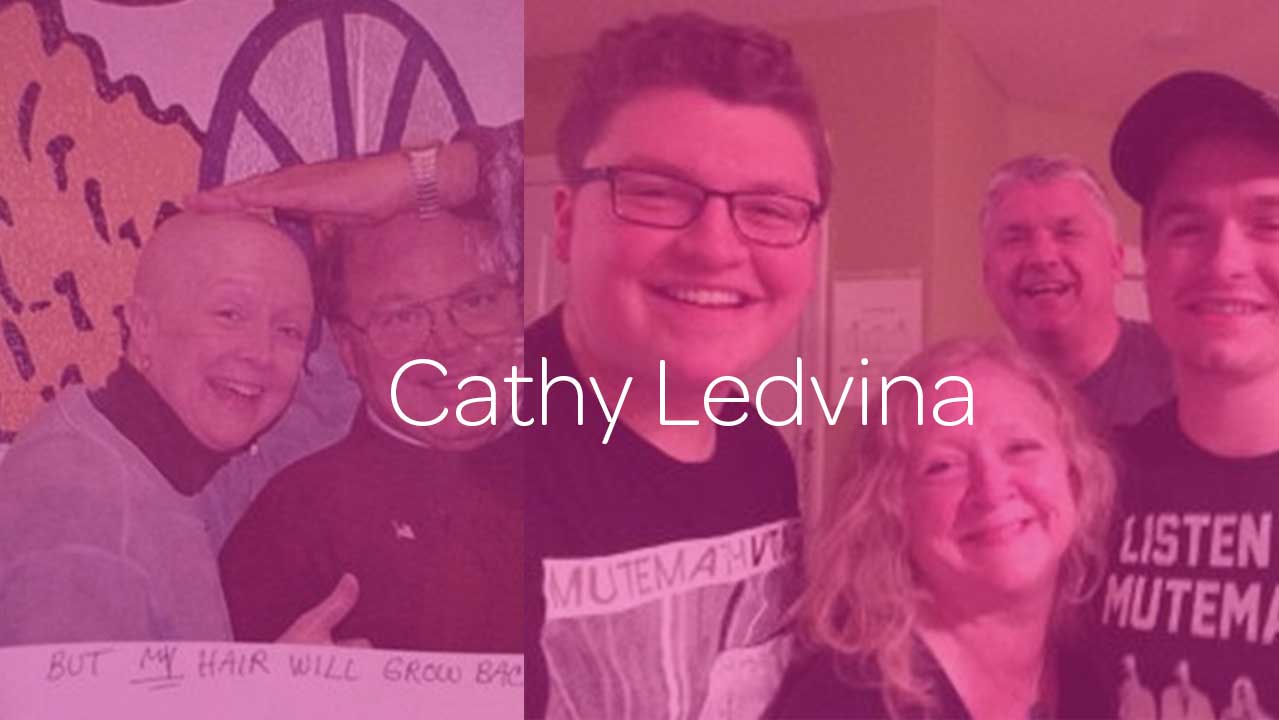The holiday season is a time of remembrance. We relive our favorite memories around the dinner table, exchange gifts with those who helped make them, and mourn those no longer with us. This December, Cathy Ledvina has an extraordinary milestone to commemorate: her sixteenth year as a breast cancer survivor.

Diagnosed in 2001, Cathy shares that this upsetting news came in the wake of losing her mother earlier that year. Despite the onslaught of burdensome news, Cathy recalls her treatment to be “a good distraction” from her mother’s passing. She endured a lumpectomy, eight rounds of chemotherapy, and thirty-five radiation treatments to ensure she could watch her 7 and 11-year-old children grow into adulthood. Now, the bouts of insomnia from Arimidex and extended recovery time in the ICU seem a small price for the sixteen years, and counting, she has had to enjoy life with her kids.
Still, like nearly all cancer survivors, Cathy notices the toll treatment took on her body. She notes, “I’m not sure if I have ‘chemo brain,’ if it’s just from getting older or being thrown into menopause, but I have trouble with names now, and people’s names were my thing.”
As a speech and language pathologist for school children ages 3 to 21, Cathy realized she could use the strategies she taught to help regain control of language for herself. On days the strategies failed her, this acquired deficit even helped her connect with her students. “I could really relate to their frustration,” she remembers.
Although treatment may have dampened Cathy’s recall, it in no way affected her humor or generosity. As she was undergoing chemotherapy, she joked with the principal at her school, saying, “We’re both balding, but mine will grow back!”
As Cathy noticed the potential her diagnosis had for bearing good fruit, she decided to participate in a MiraKind study and get tested for the KRAS-variant. She cited that her desire to become involved was two-fold: to “help in research and [get] any information I could pass along to my kids.” Alongside participating in the MiraKind community, Cathy has remained active in helping other researchers appraise the damage imperfect treatment causes cancer patients. Two notable studies to which she donated her time included using CT scans to assess side-effects of radiation on the heart, and employing iPads to assess response time as a measure of cognitive function.
Cathy hopes there will soon be greater attention to other cancers and more immunotherapy research. “We need immuno-based treatments to help our own bodies fight this,” she urged. She was happy to see MiraKind’s focus on endometriosis, immunotherapy, and other topics typically outside the scope of breast cancer, saying, “You’re a resource, not just research.”
Cathy makes it a point to share her enthusiasm with those at the front of the line and fewer years of experience as a survivor, saying, “I’m still here; you’ve got this.”
In December, Cathy’s holiday festivities will include one other cherished moment: the first Christmas with her newly adopted a 9-month-old shepherd-collie mix from Tennessee. “Dixie.”Hopefully, the beloved pooch will pass the training necessary to become a therapy dog for a local children’s hospital and nursing home. “I’ve lost 20 pounds just from playing with her,” Cathy remarked and mused, “I don’t know who rescued who.”
Want to contribute to more genetic research around breast cancer? Donate to one of our studies this holiday season!

